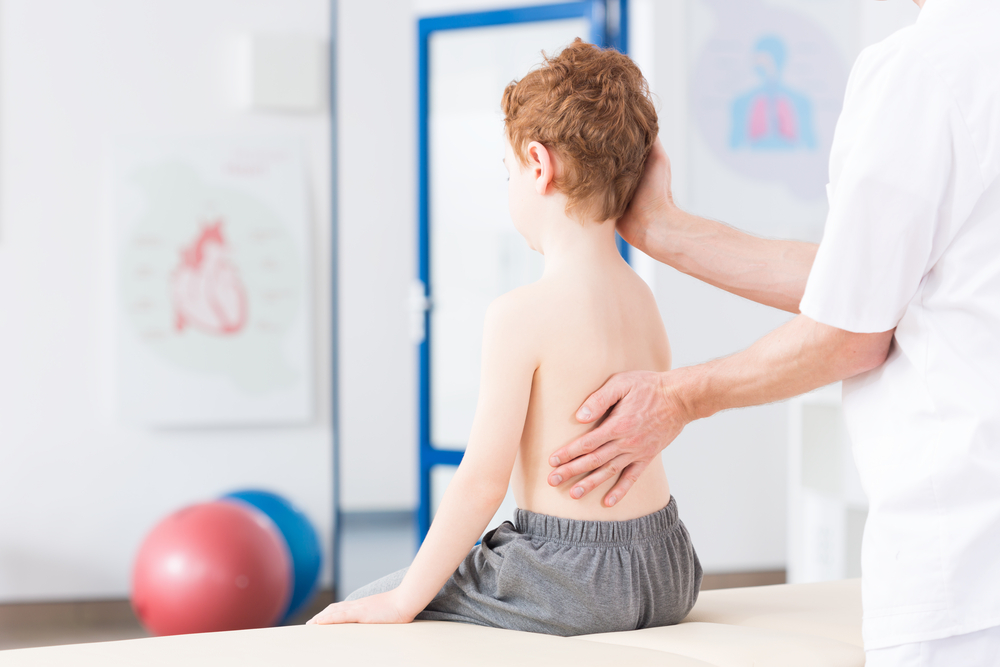
What is Early Onset Scoliosis?
Early Onset Scoliosis (EOS) is a curvature of the spine that involves a range of spinal disorders from idiopathic (without a known cause)/hereditary to syndromic and neuromuscular.
Who gets EOS?
These disorders develop before 10 years of age and therefore have a great effect on the quality of life and longevity of affected children. In the USA, approximately 1-2 children per 1000 are affected; these numbers are higher in the UK.
What are the dangers?
Children with EOS can have problems with normal breathing (as the chest wall is affected), their growth can be stunted, and they are small for their age. The quality of life seen in these children is amongst the lowest in paediatrics.
Studies have shown that if left untreated, it can lead to severe respiratory and cardiac disorders, and a shortened lifespan (with sufferers dying in their 30s or 40s).
What are the signs?
Affected children present with a spinal curvature, stunted stature, poor weight gain and exercise intolerance. Historically, focus has been on the spine in isolation, but with better understanding other areas have come to our attention:
- Development of the chest wall and lungs: Lung development occurs quite rapidly in the first 7-8 years of life. Any restrictions to this process can have a significant impact on the well-being of the child because of the effect on lung development. They may fall behind in physical activities, such as PE, or avoid these altogether.
- Associated conditions – These children usually have a lot of other medical conditions and are very often under the care of several doctors. A holistic approach to treatment is therefore recommended.
How is it treated?
The specialist pool to treat this group of patients is small. Only a few centres in the US and Europe offer expertise in treating this serious condition in children.
We now know that there are predictable growth patterns that can guide treatment. The fastest phases of growth are between birth and 5 years of age, and at the onset of puberty. In between those phases (i.e. 5 – 10 years), there is relatively steady growth.
Treatment is divided into: (1) Non-operative and (2) Operative methods:
(1) Non-operative
This involves applying a plaster jacket at regular intervals to control the spinal deformity:
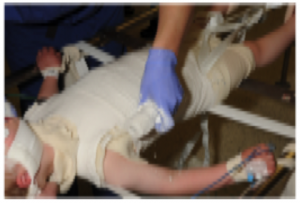
Application of a plaster jacket
It is recommended that treatment with this method is started as early as possible in order to achieve the best results. The plaster jacket is changed every 3-4 months in order to keep up with the growth of the child. It is continued for 12-18 months, or until satisfactory control of the spinal curvature has been achieved.
A plastic brace is recommended for the older child (from 4-5 years onwards in my practice). It must be well fitted, easily adjustable and applied by an experienced orthotist.
(2) Operative
Advances in recent years mean there is no need to fuse the spine at such an early age, as was the case in the past (a process that has devastating consequences for the overall development of the child). Newer techniques that involve ‘fusionless’ surgery have been devised.
In my practice I use the MAGEC device, which is a magnetically-controlled growing rod system that avoids the need for repetitive surgeries following initial insertion. The rods are lengthened through a remote control system in the clinic in order to keep up with spinal growth. This device has revolutionised the surgical care of children with EOS. A reduction in the number of surgeries means there is less likelihood of infections and less disruption to home and school life due to repeated hospital visits.
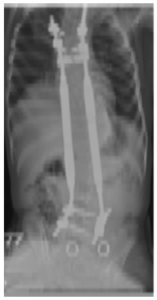
Magnetic Expansion Control System (MAGEC)
An alternative to this is the Shilla system, which does not require further lengthening by remote control; the drawback is reliance on the system to lengthen by itself.
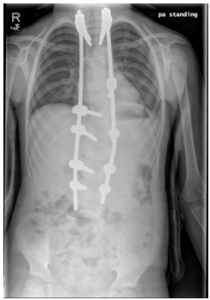
Shilla Growing Rods
In some cases, the child may have a chest wall deformity as well as a spinal curvature. If so, a device called a VEPTR (Vertical Expandable Prosthetic Titanium Rib) can be used for treatment. Unlike the MAGEC device, repeated surgeries are required.
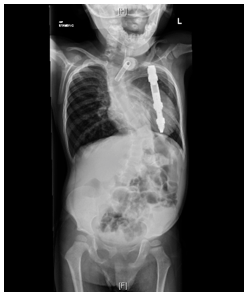
Vertical Expandable Prosthetic Titanium Rib (VEPTR)
Complications of treatment
Unfortunately, the rates of complications are high after surgery and include implant failures due to immature bone quality and infections. Surgery is not always recommended, but in certain cases this is the only option.
My take-home messages
EOS is a challenging and very complex condition that can significantly impact a child’s development. If left untreated, it can also negatively affect lifespan. It is recommended that any suspicion of a spinal curvature in a child should be referred for a specialist opinion. With a better understanding of the condition and a range of treatment options, the specialist is better equipped to offer successful treatment outcomes. The newer non-invasive growing rod systems avoid repetitive surgeries and lower hospital costs, but also provide psycho-social benefits to the child and family. Although there are still high complication rates with surgery, the alternative option of no treatment may lead to a significantly poorer outcome.
This article is for information only and should not be used for the diagnosis or treatment of medical conditions. myHealthSpecialist makes no representations as to the accuracy or completeness of any of the information in this article, or found by following any link from this article. Please consult a doctor or other healthcare professional for medical advice.

Mr Colin Nnadi FRCS(Orth)
Consultant Spine Surgeon